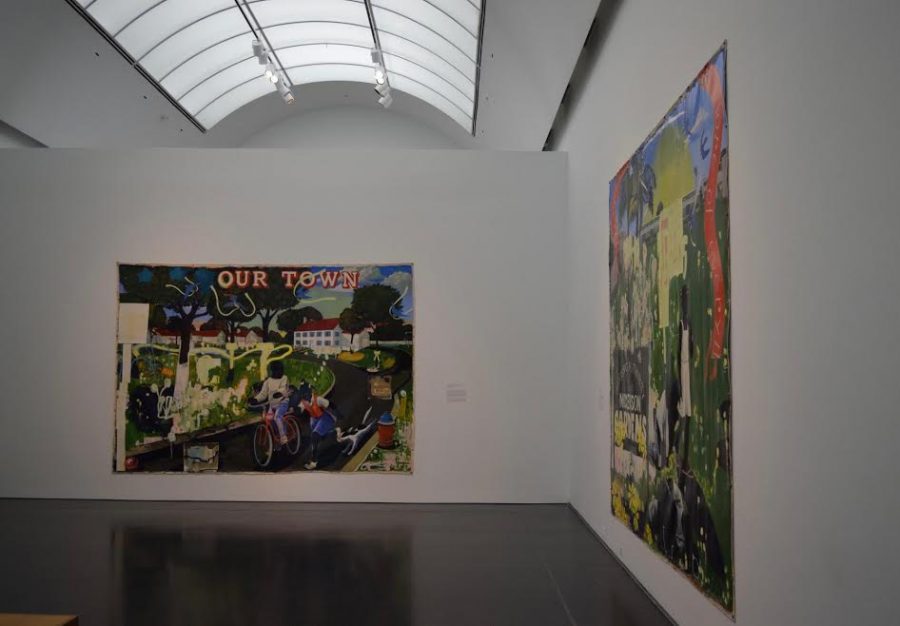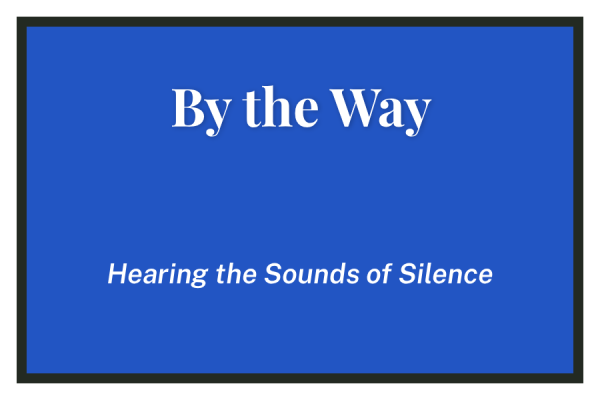The New Master
Paint it Black at the MCA
Kerry James Marshall’s “Mastry,” the newest exhibition to take the top-floor space at The Museum of Contemporary Art (MCA), is an intriguingly thoughtful, moving, and smart exhibition–and one that shapes how art history will be taught in the future.
Marshall, an American artist, was born in Alabama, grew up in South Central Los Angeles, and now lives in Chicago.
The current exhibit, the largest ever retrospective of Marshall’s work, is comprised mainly of paintings that line the same walls on which you can find the famed “Las Meninas,” by Diego Velázquez, or “The Ambassadors,” by Hans Holbein the Younger. Velázquez and Holbeing are just two of the masters Marshall mimics in his own work.
The term “Mastry” refers to old master painters. Traditional Master painters depicted great kings, queens, and other aristocrats, sometimes on their “Grand Tour” to show such figures as well-traveled. In the same way, the Masters would paint such individuals in their everyday lives as a way to make them seem more “at-one” with the common people.
Marshall celebrates contemporary African American life by creating images at the barber shop or a proposal as an equally worthy everyday depiction. Nodding to the Master painters, Marshall creates images that do not draw lines between people but instead make the world more interesting, thought-provoking, and beautiful.
Many of the paintings are done in beautiful color. Gold leaf is used as both border and detail. “Mastry” is an exhibition that–just by the use of color, texture, and range of value–is striking and wonderfully captivating.
To be sure, “Mastry” begins with race. Each person portrayed is done in pure black paint–nowhere else in the scenes is black paint used. A man and woman smiling just before getting engaged is one of the first paintings presented in the gallery. The blue of the ring box and the overall pastel tones of the clothes and the booths of the cafe the couple sit at serve as a contrast to the black paint.
In general, black paint is taught not to be used at all–or, if the teacher is less obedient to tradition, black paint is used sparingly and as the final color to be applied to a painting.
Marshall breaks this fundamental rule, representing black people in black paint. The black paint heightens Marshall’s main point: bringing black folk and their history into the high art scene.
This artistic choice, one that is provocative in two ways, proves to be one of the most ingenious, and not only thought-provoking, but beautiful choices of the contemporary artist’s work.
“I tend to think having that extreme of color, that kind of black, is amazingly beautiful…and powerful,” Marshall said of his color choice. “What I was thinking to do with my image was to reclaim the image of blackness as an emblem of power.”
The first painting is one of Marshall’s earliest pieces, titled, “A Portrait of the Artist as a Shadow of His Former Self.” The figure sits on the canvass as a typical portrait piece would, centered and cut off mid torso. Three colors–black, white, and a mixed grey-blue–are easily picked out.
The whole body is painted black except for the white color of the man’s shirt, the whites of the eyes, and the white of the teeth shown in a gaping grin–one tooth painted black.
The painting next to this is “Portrait of the Artist & a Vacuum.” The composition follows the title, the same portrait as described hanging on a reddish orange wall with a bright yellow and grey-green vacuum sitting in the foreground.
Both pieces presage the sorts of paintings that Marshall sets out to create: depictions of the everyday lives of African Americans today and in history.
“If you’re constantly being reminded of the ways in which your history and your narrative as a people were rooted in loss and decay, then you’re in deep trouble,” Marshall said. “Once you make a certain kind of peace with the past, then you should be completely oriented towards speculation about the future.”
Marshall’s “Mastry” is an exhibition that’s not only worth seeing in the next couple weeks before it leaves for the Metropolitan Museum of Art on September 25, but also one worth frequenting–visiting multiple times–so as to take in both the craft and the imagery so ingeniously depicted by one of the newest masters.









